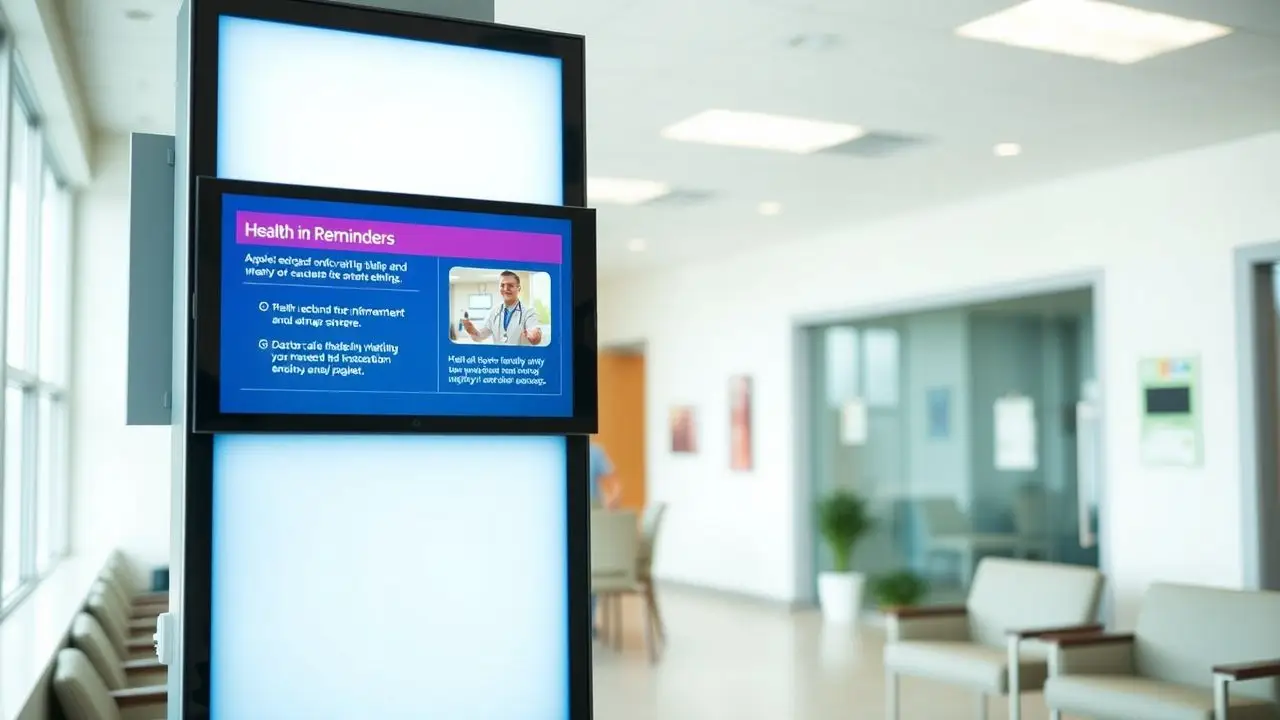Patients often feel bored and anxious while waiting at the doctor’s office. Digital signage can make waits feel shorter and keep patients informed. This post will show how digital screens help doctors communicate better and educate their patients.
Keep reading to learn more!
Key Takeaways
- Digital signage educates patients. It shows health information simply. This makes patients understand their health better.
- Signage reduces waiting stress. It shares updates and fun facts to keep patients busy while they wait.
- Signs in waiting rooms and exam areas improve visits. They show tips and explain treatments, making patients feel part of their care.
- Clear signs help everyone find their way in the office. This saves time and makes visits smoother.
- Using digital signs means less paper waste. Staff update info quickly, helping them focus more on patient care.
Table of Contents
ToggleBenefits of Digital Signage for Patient Engagement

Digital signage provides helpful information for patients. It builds trust and encourages them to take part in their care.
Providing educational information
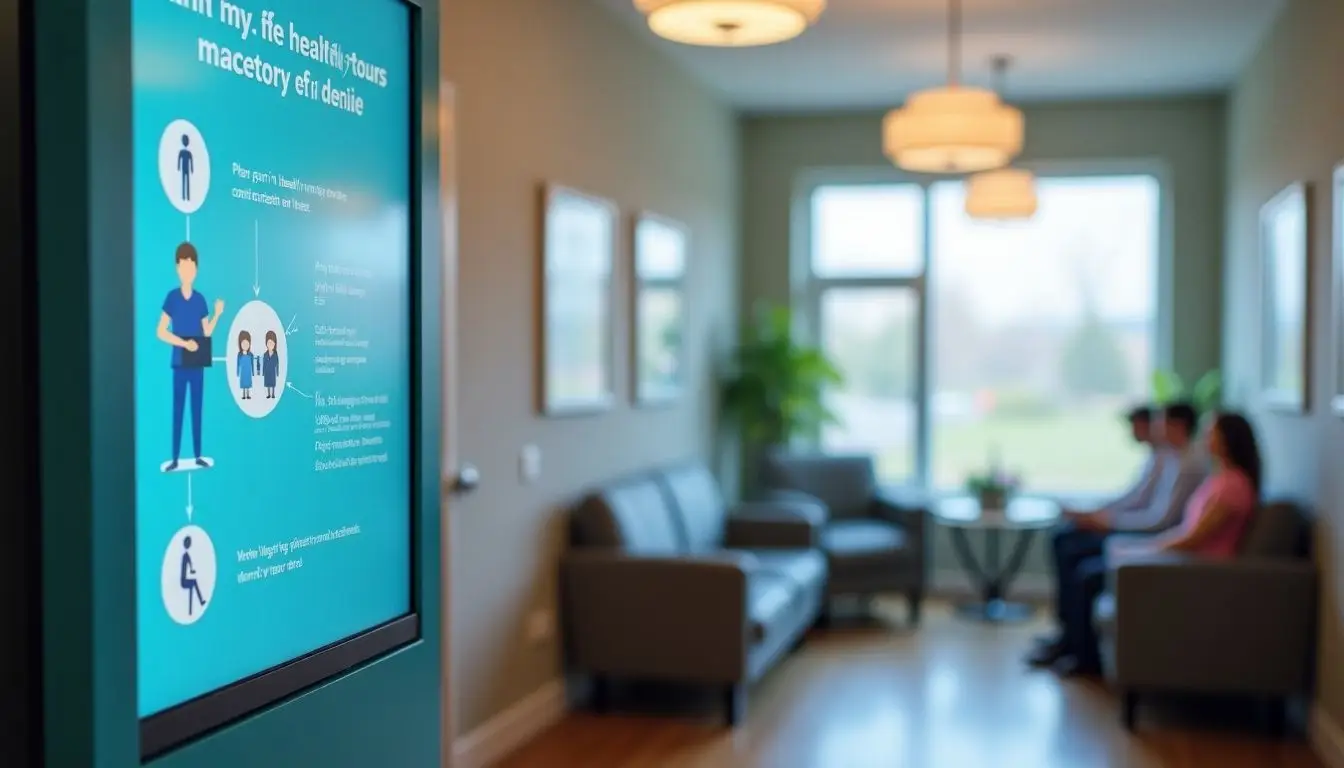
Digital signage shares important health facts. Patients can learn about conditions, treatments, and preventive care. Screens in waiting rooms show videos and graphics that explain complex topics simply.
This way, patients understand their health better.
Healthcare digital signage also encourages patient questions. When patients see useful information, they feel more engaged. They become active partners in their own care decisions.
The right educational content builds trust between doctors and patients in medical offices.
Building trust and promoting patient involvement in treatment decisions
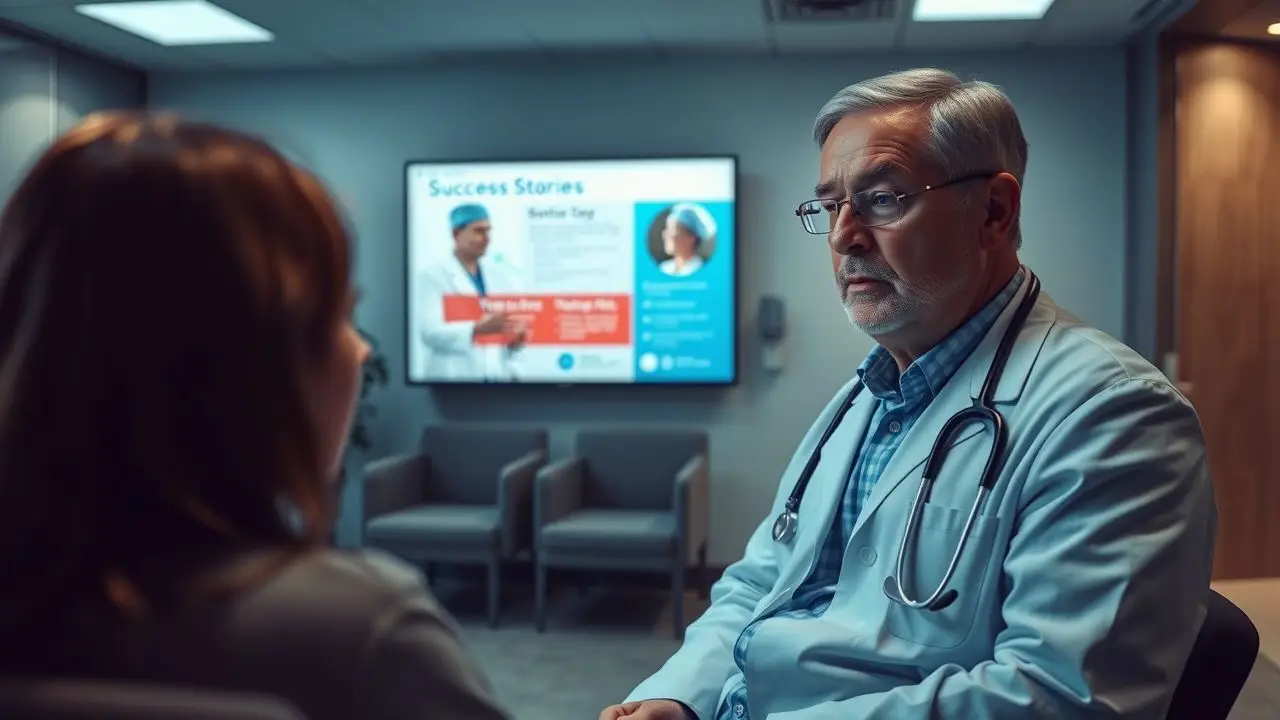
Trust is key in healthcare. Digital signage can help build this trust. It shows patients important information about their health and treatments. Patients feel more empowered when they understand their options.
Educational content on screens allows them to make informed choices.
Showing clear, accurate information encourages patient involvement. This boosts confidence in the medical team and supports better communication tools. Staff can use digital displays to explain procedures or share success stories from other patients.
First-hand experiences shared through digital signage foster a stronger bond between doctors and patients, improving overall patient engagement in treatment decisions.
Reducing perceived wait times

Digital signage can help reduce perceived wait times in doctor’s offices. Patients often feel anxious while waiting. Clear, engaging content on screens keeps them informed and entertained.
This distraction makes time feel shorter.
Screens can show health tips, news updates, or fun facts. They provide valuable healthcare information that educates patients during their wait. By using digital signage effectively, offices improve patient experience and satisfaction.
Happy patients are more likely to participate in their care decisions.
Ways to Use Digital Signage in Doctor’s Offices
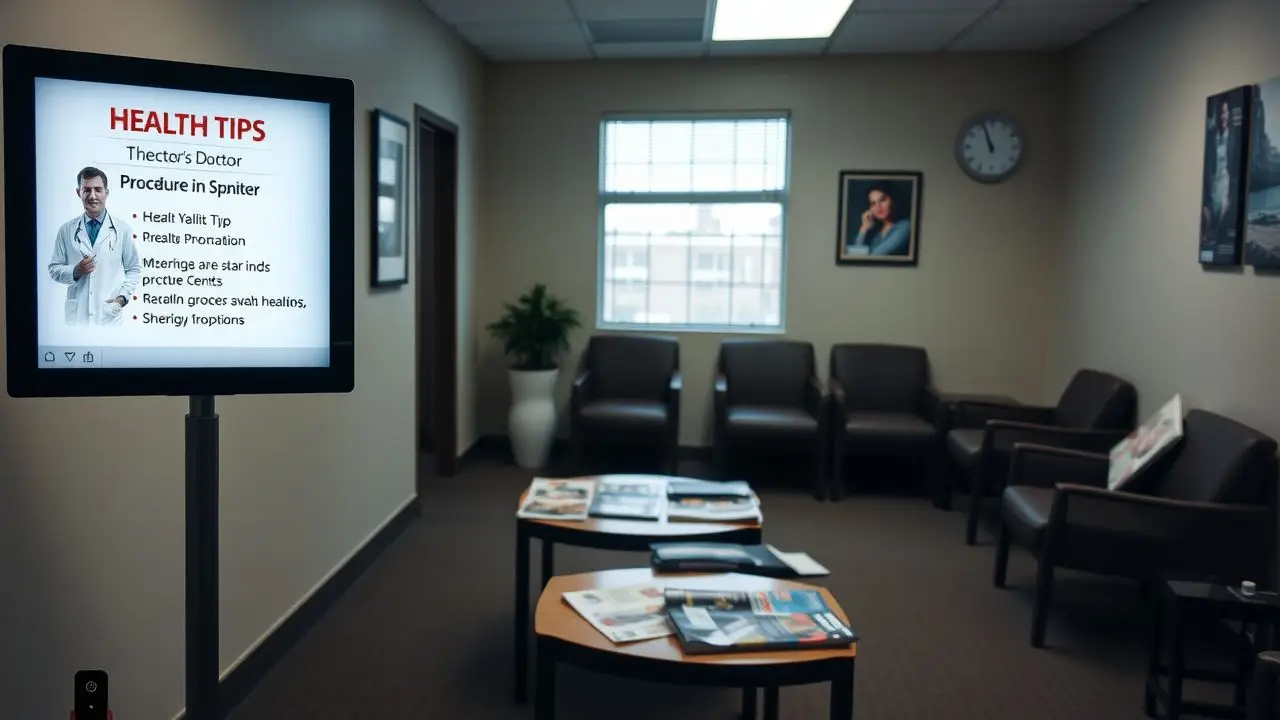
Doctors can use digital signs in waiting rooms to share health tips and updates. They can also place screens in exam rooms to explain procedures and keep patients informed.
In waiting rooms and lobbies
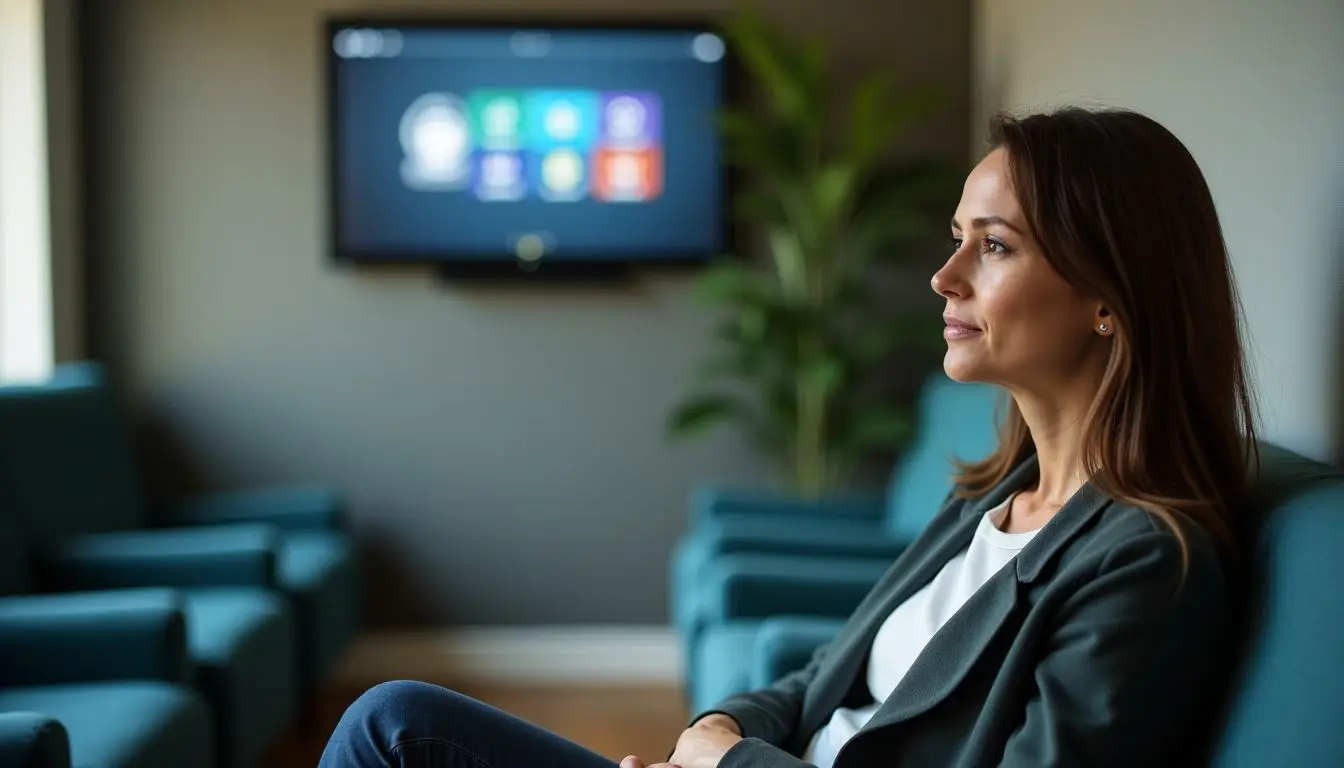
Digital signage is a great tool for waiting rooms and lobbies. Patients can see important healthcare information on screens while they wait. This keeps them informed about their health options and upcoming treatments.
Digital signs can show educational videos, tips for healthy living, or instructions for filling out forms.
Patients often feel anxious in waiting areas. Good digital content helps calm those nerves by keeping them engaged. Guests will appreciate having something to watch rather than staring at the walls.
First-hand experience shows that well-placed electronic signage reduces perceived wait times, making visits more pleasant overall.
In exam and procedure rooms
In exam and procedure rooms, digital signage can be very useful. It shows important healthcare information quickly. Patients can learn about their conditions or treatments while they wait.
This helps them feel more involved in their care.
Signage also displays tips for health and wellness. It reminds patients to ask questions about their treatment plans. Clear communication leads to better patient compliance. Happy patients often have better health outcomes too.
Using this technology makes the experience smoother for both staff and patients in medical practice settings.
For wayfinding and employee communication
Digital signage helps with wayfinding in doctor’s offices. Signs can guide patients to rooms and areas like restrooms. This reduces confusion and saves time. Patients appreciate clear directions, which improves their experience.
These displays also aid employee communication. Staff can receive updates about schedules or important announcements easily. Quick information boosts teamwork and keeps everyone on the same page.
Better staff communication leads to higher employee satisfaction, which benefits patient care overall.
How Digital Signage Can Improve Doctor’s Offices

Digital signage can make doctor’s offices run better. It helps staff work more efficiently. Patients feel happier and more engaged. They get the information they need quickly. This leads to better health results for everyone.
Explore how digital signage can change your practice for the better!
Increased efficiency and productivity
Digital signage can boost efficiency in doctor’s offices. Staff can share information quickly. No more printing paper signs or handouts. Updates happen in real-time. Employees spend less time managing displays and more time helping patients.
Patients receive important info instantly. They learn about treatments, services, and health tips while waiting. First-hand experience shows that this reduces the need for staff intervention on basic questions.
With all this information at their fingertips, patient communication improves significantly. The office runs smoothly, making everyone happier and healthier.
Enhanced patient experience
Digital signage can greatly improve patient experience in doctor’s offices. Patients feel more informed when they see educational information on screens. This helps them understand their health better and make smarter choices about their care.
Waiting rooms can be more enjoyable too. With engaging content, patients are less likely to feel bored or anxious while waiting. Timely updates on facility changes keep everyone in the loop, reducing confusion.
Clear wayfinding signs help patients find where they need to go easily. All these features lead to a smoother visit and greater satisfaction with healthcare services.
Improved patient compliance and health outcomes
Digital signage can boost patient compliance and improve health outcomes. Clear, easy-to-read information helps patients understand their treatment plans. They learn about medications and follow-up care quickly through interactive signage.
Patients who feel informed are more likely to stick to their plans. Studies show that better understanding leads to better results. Healthier choices become easier with engaging healthcare information displays in waiting rooms and exam areas.
This not only builds trust but also enhances the overall patient experience in healthcare facilities.
Conclusion
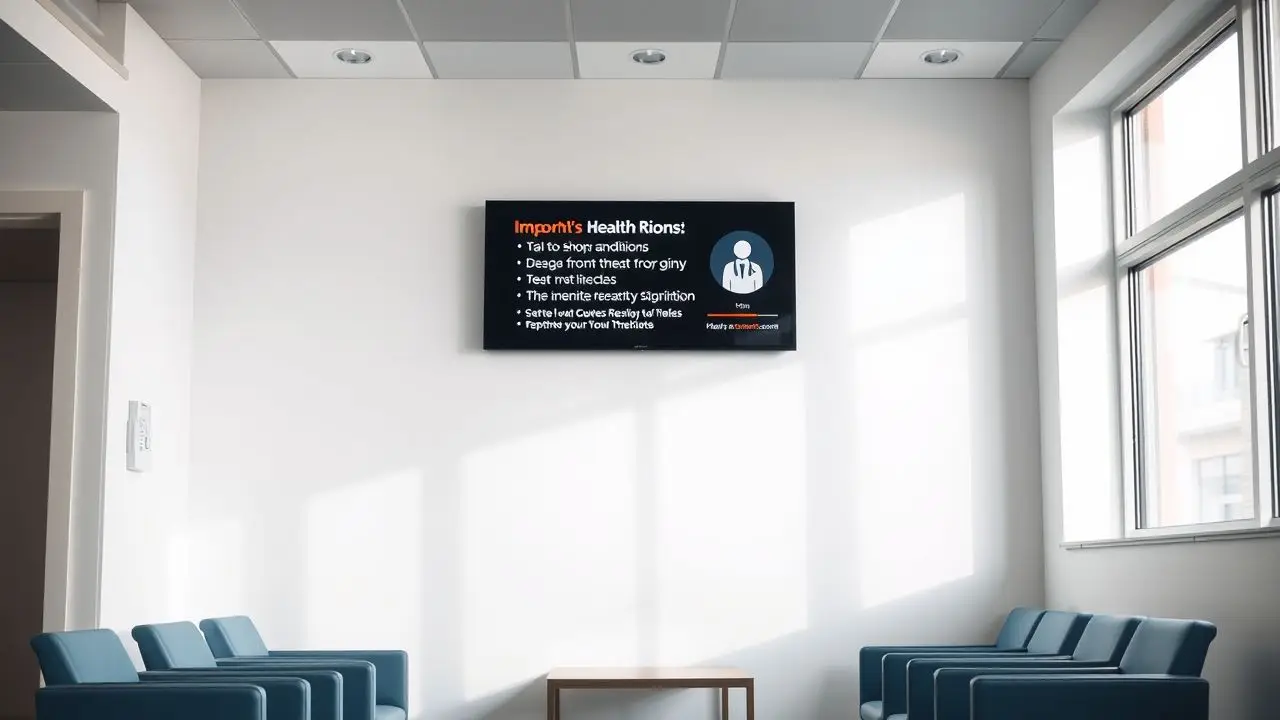
Every doctor’s office should use digital signage. This tool helps keep patients informed and engaged. It makes waiting rooms more pleasant by sharing useful information. Patients feel more connected to their care.
Digital signs can truly transform the patient experience for the better.
FAQs
1. Why does every doctor’s office need digital signage for patient engagement?
Digital signage is a key part of healthcare technology that boosts patient education and engagement in doctor’s offices. It provides up-to-date facility updates, waiting room information, and helps with hospital wayfinding.
2. How can digital signage help in community building within hospitals?
Healthcare digital signage can display messages that foster community building among patients and employees in hospitals. This way, it enhances employee engagement and improves the overall atmosphere of the healthcare facility.
3. What role does healthcare devices play in improving patient education through digital signage?
Healthcare devices connected to digital signage systems can provide valuable health-related content for patients’ education while they wait for their appointments or during their stay at the hospital.
4. Can digital signage be used as a tool for providing facility updates?
Yes! Digital Signage is an efficient tool to share real-time facility updates like changes in visiting hours, availability of doctors, or any new services introduced by the hospital.
